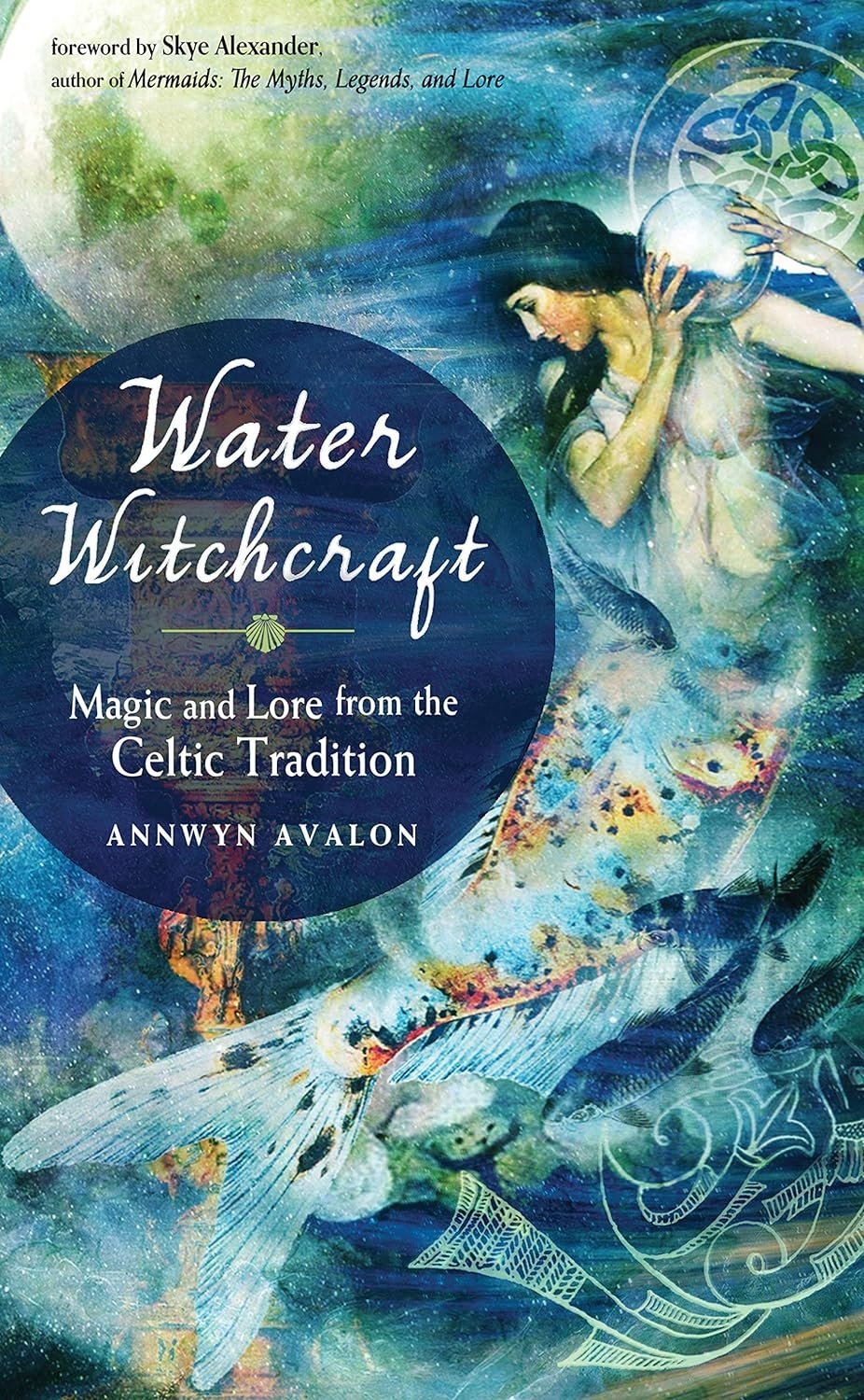The Elements In Witchcraft, Wicca and Ritual Magick Part 3 WATER
The Element of Water and its relationship to the Direction of West in Witchcraft and Wicca.
In the frameworks of witchcraft, Wicca, traditional witchcraft, paganism, and ceremonial magic, the natural elements—Earth, Air, Fire, and Water—serve as the embodiment of both spiritual and physical forces. Water holds a special place as the element of intuition, emotion, dreams, and transformation.
Traditionally, the West is the direction associated with Water.
The Symbolism of Water In witchcraft Water is universally seen as the element of fluidity, healing, cleansing, and psychic awareness. Like all elements, Water gets its historical features within nature itself: water nourishes life, cleanses impurities, and transforms into different states like liquid gas and solids. In modern traditional witchcraft and Wicca, it is strongly tied to the Moon and the mysteries of the subconscious.
Meanwhile, Ceremonial Magick views Water as a element of balancing, integral to invoking harmony and emotional equilibrium during ritual work.
Water is commonly associated with:
• Qualities: Intuition, dreams, emotion, healing, receptivity, reflection.
• Tools: The chalice, cauldron, bowl of water, seashells.
• Colors: Blue, indigo, sea green, silver.
• Astrological signs: Cancer, Scorpio, Pisces.
• Deities: Sea and river deities such as Poseidon/Neptune, Yemaya, Oshun, Tiamat, Manannán mac Lir.
• Magical uses: Divination especially scrying with water, purification, dream work, emotional healing, and connecting with the spirit world.
The West in Pagan and Magical Cosmology In Pagan traditions
West is universally regarded as the direction of setting, completion, and transition. As the sun sets in the western horizon, the West becomes a place of endings, death, rest, and the descent into the subconscious.
• In Wicca, the West is often invoked as the home of the elemental guardians of Water.
• In witchcraft, the West is the gateway to the mystical and the liminal, where practitioners cross into realms of spirit, shadow, and inner truth.
• In Pagan Cultures, the West often represents the Otherworld, the mystical land beyond death or beyond the veil.
• In ceremonial magicthe West represents emotional balance, intuition, and the watery realm of the subconscious.
Rituals often call on archangels (such as Gabriel) to preside over the West and Water. The West acts as a doorway to mysteries—both internal (dreams, intuition, emotions) and external (the spiritual realm and the afterlife). ⸻ Ritual and Magical Practice In ritual practice the West are invoked with specific tools, words, and symbolic actions:
1. Circle Casting – When creating sacred space, Witches, Pagans, and practitioners of Wicca often call upon the elemental guardians of the West. They use the chalice or cauldron may be placed on the western side of the altar, filled with water or wine.
2. Invocations – Wiccans and witches may summon the powers of Water in the West through invocations that emphasize peace, healing, compassion, and intuition.
3. Scrying and Divination – Bowls of water, mirrors, or still pools are used for divination, connecting the practitioner to the intuitive realm of Water.
4. Purification Rites – Sprinkling water or using ritual baths cleanses energy and prepares the self or space for magical work. Water is a great cleansing element.
5. Moon Magic – The Moon, often rising in the East and setting in the West, is deeply tied to Water rituals, particularly those focusing on tides, fertility, and emotional cycles. Many witches will use the moon to cleans their tools, crystals, and often use water to make moon water than can be used for spell work.
Water and the Cycle of Life
In many pagan witchcraft and Wicca traditions, the four directions also represent the stages of life. The West, tied to Water, corresponds to maturity, decline, and death, but also to renewal and the preparation for rebirth. This cyclical view frames Water as both a dissolver and a creator, embodying transformation. Water is also commonly associated with Shamanism. In both Shamanic and witchcraft perspectives, traveling “West” in vision journeys often leads to encounters with ancestors, spirits of the dead, or guides that dwell beyond the veil. This reinforces the West as a liminal threshold between the material and spiritual planes.
Conclusion
The element of Water and the direction of the West together embody the mysteries of emotion, intuition, endings, and transformation in witchcraft, Wicca, paganism, and ceremonial magic. Water’s role as a cleanser, healer, and psychic gateway harmonizes perfectly with the West’s symbolism of death, renewal, and the subconscious. Whether through Wiccan ritual, pagan mythology, witchcraft’s intuitive practices, or ceremonial magic’s structured invocations, the marriage of Water and the West remains a profound part of many a spiritual practice. For witchcraft, wicca and pagan ritual magick practitioners, water is a reminder to honor the fluid, receptive, and transformative aspects of existence, while embracing the cycles of life, death, and rebirth that flow like an eternal tide.
For tools associated with element of water check out our.... Cauldrons: https://artesandcraft.com/products/Cauldrons-for-witchcraft-wicca-and-pagan-magick-spell-casting-c171494828
Offering bowls: https://artesandcraft.com/products/Altar-Offering-Dish-for-pagan-devotion-and-witchcraft-ritual-magick-c171495106
Luna Ignis "Water" oil: https://artesandcraft.com/products/Luna-Ignis-Water-Oil-p684416785
A book on Water Magic: https://artesandcraft.com/products/Elements-of-Witchcraft-Water-Magic-p684416369

Display prices in:USD
